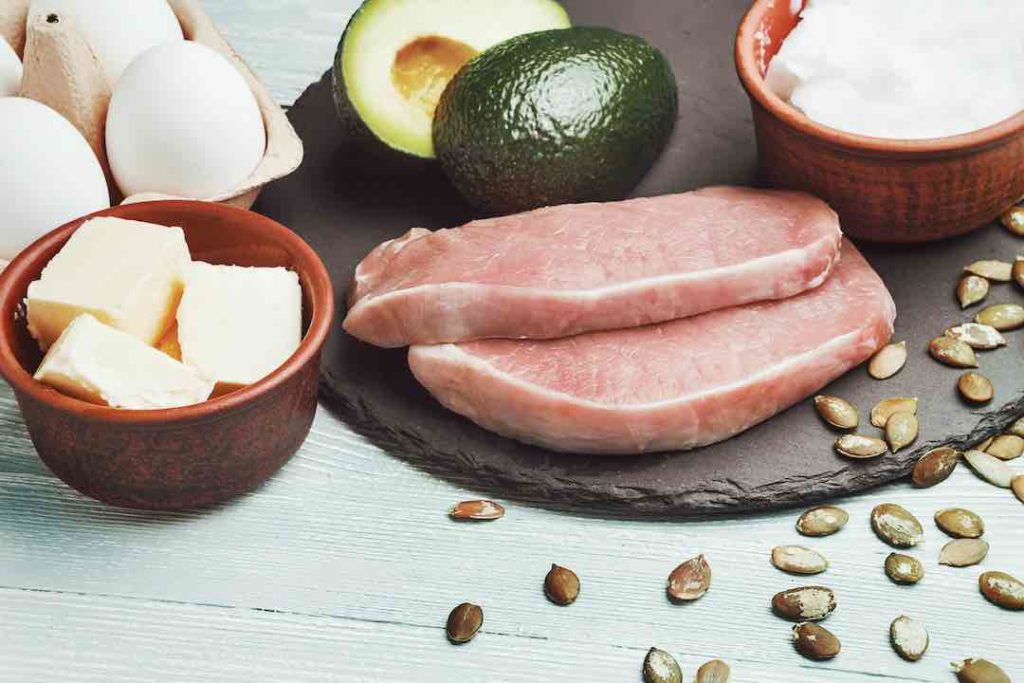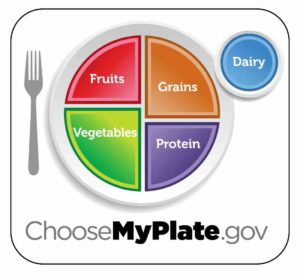Every year there seems to be a new fad diet that picks up speed and becomes the topic of social media, new books, food products, and social conversations. We need to be talking more about why fad diets fail.
Despite the almost mystical nature of fad diets, thousands of people are captivated by each new trend, looking for the next hopeful solution to losing weight once and for all. But maybe these diets aren’t so magical after all. If they were so great, wouldn’t more people find success with them? Wouldn’t they lose weight and maintain that weight loss? Some fad diets originated for medical treatments and are used for that purpose to this day. But the vast majority of them are followed by people who would benefit from better direction and tools to eat a balanced, nonrestrictive diet. Let’s take a closer look at the top fad diets, why they fail, and realistic alternatives.
The Truth About Fad Diets
Ultimately, there is much more to a healthy lifestyle than only focusing on the foods you eat. Physical activity, sleep, positive social relationships, and mental health are just as important. Unfortunately, I’m not here to tell you that there is one size fits all approach to a healthy weight. However, most fad diets fail because of key similarities, and I’m here to dive into that with you.
To start off, let’s clear up any confusion about what these fad diets actually are.
What Does Fad Diet Mean?
A fad diet is typically a diet that excludes certain foods or food groups, is restrictive, and is touted to help people lose weight – fast. These diets become very popular for a certain amount of time, but over time may become less sought after. They often aren’t supported by any significant research (if any at all), or the research is done on one specific population and can’t be generalized to the main population.
Why Do People Lose Weight Quickly When Starting a Fad Diet?
Most often, people will choose a fad diet to reach their weight loss goals. The weight may come off fairly quickly (and easily!) to start. But don’t let this fool you. Our bodies store about 1 gram of water for every 3 grams of carbohydrates. Since fad diets typically restrict carbs and calories, the body uses these stored carbohydrates for fuel, carbohydrate stores decline, and water storage diminishes as well. Hence, magical and quick weight loss that will be reversed the moment adequate carbs are consumed.
List of Fad Diets
This list of fad diets is only a portion of the many fad diets people have followed over the years. However, it’s a list of the ones that are most popular in more recent times, and are ones I’m asked about frequently.
- Intermittent Fasting
- The Gluten-Free Diet
- The Ketogenic Diet (Keto)
- Paleo Diet
- Whole 30
- Juice Cleanses
- Celery Juice Diet
Here is a closer look at each one – what they are and how sustainable or unsustainable they actually are.
Intermittent Fasting
There are many different variations of intermittent fasting – some are based on hours in a day, while others involve fasting for a day or more at a time. While some people have found weight-loss success on this diet, two of the most attributable things for this are the limit in hours of the day calories can be consumed, and generally under-consuming calories. I’ve heard that many people like the diet due to a straight-forward and clear-cut structure. While intermittent fasting doesn’t restrict food groups, it’s still a form of restriction. Since a typical eating schedule is thrown out the window, many people tend to overeat at meals. The body can only absorb and metabolize a certain amount of certain nutrients at once. Underconsumption and malabsorption can lead to nutrient deficiencies. The limit on the amount of protein that is absorbed at one time is also an issue for athletes or anyone trying to build muscle. I’d rather see that effort go towards working on other food behavior strategies, developing healthy habits, and finding a more sustainable eating pattern.
Gluten-Free Diet
The Gluten-Free Diet is perhaps one of the most popular fad diets out of the past several years. Ironically enough, many people who follow a gluten-free diet don’t even know what gluten is. It is a protein found in wheat, barley, and rye. While the gluten-free diet is a medical diet for individuals with Celiac Disease, non-celiac gluten sensitivity, and those with a wheat allergy, many other people have turned to it as another way to restrict certain foods to lose weight.
I’ve often heard people say they experience gastrointestinal (GI) symptoms such as stomach upset, gas, bloating, constipation, and more, and immediately attribute it to gluten. It’s important to rule out other suspects rather than blame gluten. A Registered Dietitian and a gastroenterologist can help guide you through this process. For example, anyone sensitive to the carbohydrates in wheat may be having an adverse reaction to the carbs in that gluten-containing food, not the gluten.
Since many gluten-free options have more sugar and are more processed than their wheat-containing counterparts, a gluten-free diet doesn’t always equate to a healthier diet. Plus, whole wheat is a whole grain that has a lot of health benefits!
The Ketogenic Diet (aka Keto)
A Ketogenic diet is typically composed of about 70-80% fat, 10-15% protein, and 5-10% CHO. The purpose of this spread of macronutrients is to force the body into ketosis and switch the fuel-burning mechanisms to primarily burn ketones (which are created by the liver from the fatty acids in fat), rather than carbohydrates. To properly follow this diet and remain in ketosis, a person is supposed to test the number of ketones in their blood regularly.

The ketogenic diet was originally used as a treatment for patients with epilepsy. The restriction of carbohydrates in the diet helped to reduce seizures, especially in those who weren’t responsive to other medications. It is still used as a medical treatment today.
For bacon, cheese, and egg lovers, this diet may sound like a dream come true. But if you take a step back and look at the foods you can include and the foods you have to restrict, you have to take out a lot of healthy foods. Most fruits, starchy vegetables, grains, and legumes are nearly impossible to include, given the restriction on carbohydrates. It’s also very difficult to maintain – especially when eating at restaurants. Not only does this exclude the valuable fiber from these foods, but you’re also missing out on disease-fighting phytonutrients.
The Paleo Diet
Paleo is short for Paleolithic. Its ideology is to mimic the way our hunter-gatherer ancestors ate thousands of years ago. It doesn’t allow for any grains, legumes, added sugars, added sweeteners, or dairy. The goal: avoid processed foods. Red meat is on the acceptable foods list. As with any other eating pattern, high red meat consumption can increase saturated fat intake- a nutrient linked to heart disease and other negative health outcomes.
It is possible to get all of the nutrients you need in a day with this diet with a proper plan, but unless someone has a medical reason to remove grains, legumes, or dairy, I wouldn’t recommend taking them out.
Whole 30
Whole 30 is another trendy diet that is a strict elimination diet. There are a lot of elimination diets out there that have a similar concept. To follow the diet, one must remove several food groups, including grains, legumes, and dairy, and also avoid added sugars, artificial sweeteners, alcohol, carrageenan, MSG, and sulfites (common preservatives and flavor enhancers). Then after the 30 days, an individual reintroduces each group to try to identify the foods that were causing them discomfort. Often, people use this diet as a way to lose weight, which will likely happen due to the restrictive nature of the diet. However, as mentioned previously, a lot of the initial weight loss is water weight, and many people gain back the weight lost, plus more. Like any other fad diets, when you are too restrictive, it becomes more difficult to control food behaviors. Plus, the core message with this diet is to eat whole, unprocessed foods, which you can do without following a restrictive diet.
Did you know that if you remove lactose from your diet, after a while, your intestines stop producing as much lactase? This may make it seem like you have lactose intolerance when in reality, you just need to build up those enzymes again!
Juice Cleanse
Juice cleanses are a unique fad in this list. While typically short-term, they are yet again a diet meant to help lose weight quickly. I love to see people consuming fruits and vegetables because they’re still getting many nutrients and phytonutrients. But juicing will reap you of some of those nutrients, including fiber. The length of the diet may vary depending on the specific one followed. Some don’t allow any solid foods, while others may allow for vegetables and salad or nuts like almonds. They’re restrictive, and nearly all of the weight lost while on this diet is water weight. It also doesn’t teach any good habits for healthy eating, healthy weight loss, or how to sustain weight loss. Eating a lot of vegetables, fruits, lean protein, and adequate portions of grains and healthy fats is a much better and more sustainable approach.
The Celery Juice Diet
The Celery Juice Diet entails drinking celery juice every morning. This is purported to detox your body, help you lose weight, and potentially cure and prevent diseases. As you can probably guess, there isn’t one food that can be the cure to all of our ailments. There are a lot of vitamins, minerals, and phytonutrients in celery, so it’s a great food to include in your diet. But if you’re looking to achieve all of the false claims from this fad, it’s much easier and likely more enjoyable to include a mix of plant foods. I love a chart in The Plant-Based Boost, Nutrition Solutions for Athletes and Exercise Enthusiasts by dietitian Melissa Halas, MA, RDN, CDE that lists different plant-based foods, the phytonutrients they contain, and their health benefits.
Alternatively, if you’re an athlete or individual looking for an anti-inflammatory beverage that is backed by a lot of research, try tart cherry juice. These tart cherries are packed with anti-inflammatory compounds that can help fight inflammation and aid in recovery after exercise.
Cons of Fad Diets – Why are fad diets bad for you?
Many people fall prey to fad diets. I must admit they often have a lot of excellent promises and are pretty convincing before you do your detective work on them. But unfortunately, they often fall short of those lofty promises and leave you feeling more defeated than when you started. Several main reasons fad diets can be unhealthy are that they can lead to:
- nutrient deficiencies
- hormonal imbalances
- physical and mental fatigue
- gastrointestinal issues
- dehydration (remember what I mentioned about carbs and storing water?)
- decreased muscle mass from fast weight loss
- a poor relationship with food
Most Fad Diets Fail Because of These Reasons
While fad diets seem promising and may help people feel better or lose weight quickly, the underlying issue with many of them is their restrictive nature and how difficult it is to maintain them. While some of these diets are necessary to treat medical conditions (i.e., The Gluten-free Diet for Celiac’s Disease and The Ketogenic Diet for epilepsy), they are often used for food restriction. The top reasons these fad diets fail are:
- how restrictive they are
- how difficult they can be to follow when dining out
- how difficult they make it to eat in social settings
- how difficult they are to maintain
- how expensive they can be
Recommended Healthy Eating Patterns
Several healthy eating patterns have “diet” in their name, but they are far from what you’d typically see with a diet to lose weight. They are sustainable, offer many health benefits, and aren’t restrictive. Examples of these diets are:
- The Mediterranean Diet – Large emphasis on whole grains, nuts, seeds, fruits, vegetables, oils, seafood, and dairy.
- The DASH Diet – Focused on fruits, vegetables, whole grains, fish, poultry, beans, nuts, vegetable oils, and nonfat or low-fat dairy. Lower in processed foods. Limits sodium, saturated fat, and added sugars.
- The MIND Diet – A combination of the Mediterranean Diet and the DASH Diet, but with more of an emphasis on brain health.
Does Your Diet Include Foods from Each of the 5 Food Groups?
Every five years, the Dietary Guidelines for Americans are updated. The purpose of these guidelines is to help individuals, organizations, and institutions help guide Americans to follow healthier eating patterns. The information is backed by many decades of science and is reviewed by leading dietitians, health professionals, and government officials.

There are five main food groups that are part of a healthy, balanced diet. These include:
- Fruits
- Vegetables
- Grains (eat at least 1/2 of grains whole)
- Dairy (low-fat or nonfat)
- Protein (lean)
Many of the popular fad diets I mentioned are missing one or several of these groups. Grains are often one of the first to go. To find out the right balance of carbohydrates for your lifestyle, take a look at my other article, “Carbohydrate Recommendations for All Activity Levels?“
Final Thoughts
If you have followed a fad diet before, are currently on a fad diet, or are restricting a food group for another reason, it may be worth examining why you chose to do so. If a specific type of food doesn’t make you feel good, the first solution isn’t to completely take it out of your diet. Instead, schedule an appointment with a Registered Dietitian to get to the root of what’s making you feel that way. Keep a journal to keep track of your symptoms, or use an app like Cara to see if you can discover trends.
You may also hear about other fad diets that include specific supplements. Before rushing to add any supplement to your cart, take a look at my six steps to follow in choosing the right supplements.
As you can see, there are many hidden facts and realities to fad diets that aren’t apparent right off the bat. While some of these diets may be extremely beneficial for some people for medical reasons and can be planned to reach nutrient needs, always make sure to play detective before falling prey to the next fad diet! If weight loss is your goal, start with one of the recommended eating patterns and see how you do with those!

